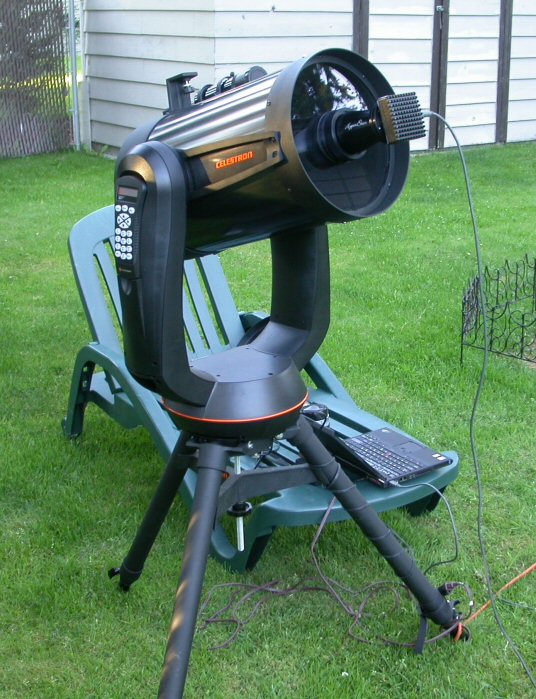
The StratoLoft Astronomical Hardware
It all started with taking my mom's Kodak browine camera apart and putting it back together over and over again. Like a true engineer, I had to know how it worked, what was the magic. Soon I'd taken my dad's 35mm Argus C4 apart and gotten that back together again. I was on my way ( it was about that time that my dad figured he'd upgrade to a Minolta SRT-101 ).
The first telescope I made used the closeup lens adapter from my mom's Kodak brownie, a bellows from an enlarger, a long piece of furnace duct, lots of black paint, and my dad's Minolta as the film holder. It had a focal length of about 2 meters, but was about F72. Only good for images of the sun setting on a road about 2 miles away.
Then a few years ago, mom got me a $25 Tasco telescope kit from a yard sale. You could kinda see Saturn's rings, and the bands of Jupiter, but not much else. It did have a solar filter, and watching sunspots was cool.
Then one of my engineers let me borrow his Orion 80mm refractor for a weekend. I hooked it up to my CoolPix 950 and got some pictures of the mooon. Very cool. Then I looked at Saturn and Juptiter. Nothing like what I remembered

My usual rig ( without the wedge ) July 2005.
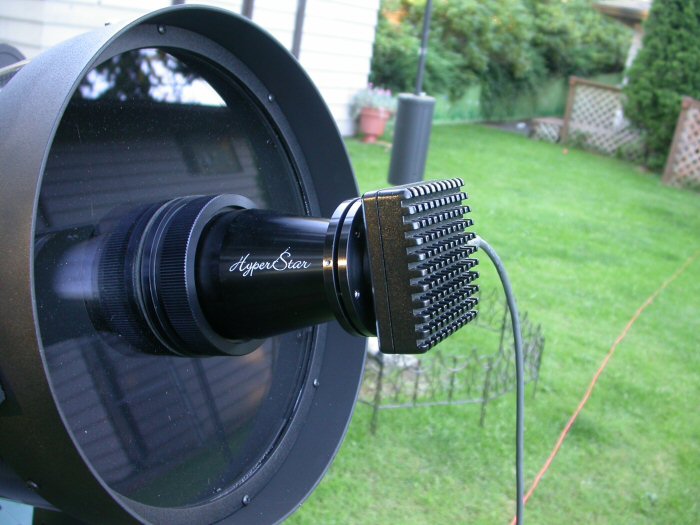
A closeup of the HyperStar lens with the Meade DSI July 2005.
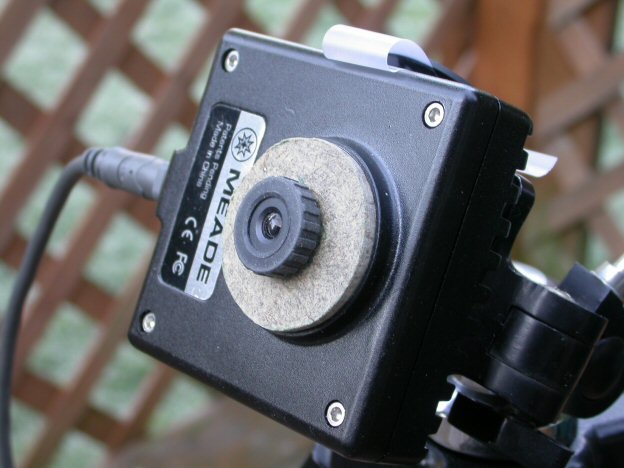
A lashup to mount a 3com webcam lens on a Meade DSI CCD camera. July 2005.
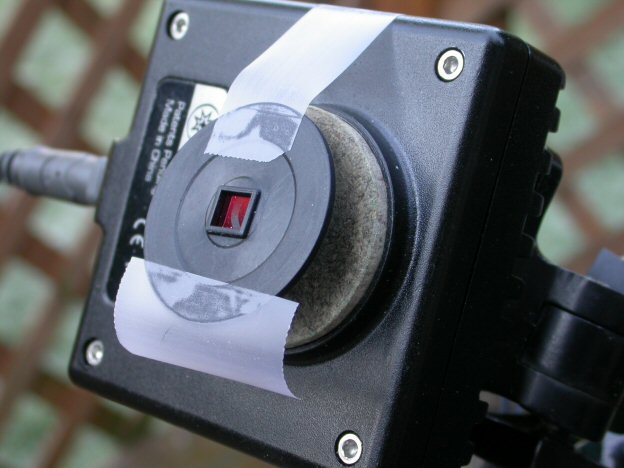
Of course there is no clearance on the back of the webcam lens, so I had to move the IR blocking filter to the front (yuck). July 2005.
Back in 2011, I got a Sony NEX3 for my birthday. Sony really gets the MILC concept (unlike Canon and Nikon). The biggest advantage of MILC is the short flange length. What this means is that all of my old lenses are usable with one of the best CMOS sensors on the market. For astrophotography, I love to mount the NEX3 with an old Minolta MC 135mm F2.8 telephoto. The fast F-number gives really quick exposures for getting a lot of photos in for stacking. The photo below is this combination sitting piggyback on top of my Celestron NextStar-11 taking exposures of the Andromeda galaxy on my deck in Edmonds WA ( thus the bright sky in the background of Andromeda ).
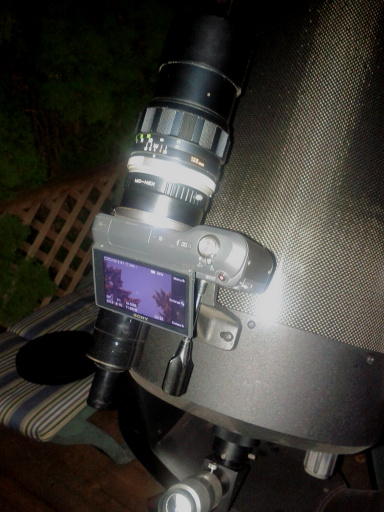
The other fun thing to do with the NEX3 is to mount it on the HyperStar adapter for the NextStar-11. This turns a 2000mm F8 telescope into a 500mm F2 lens! Unfortunately, I've got an early version of the HyperStar lens, and I've never been able to find out how to modify the optics to work better with an APS-C size sensor. The HyperStar lens only produces a 10mm circle focused stars, so it's wasting most of the sensor on the NEX3. The new versions look like the work better with modern DSLRs but I can't afford the $900 for a new version (arg). Anyway, here is my setup with the NEX3 and the HyperStar:
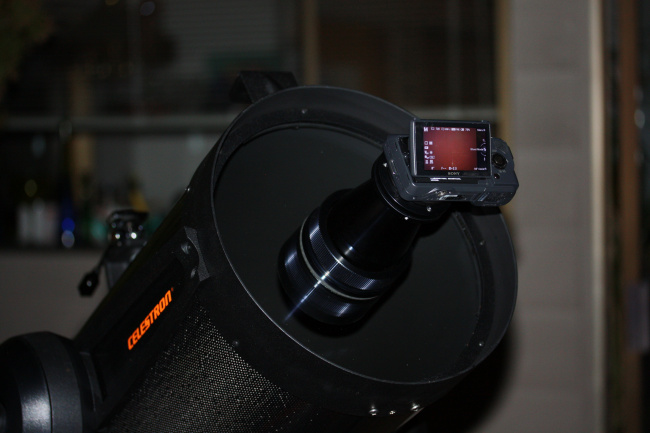
Back to The Astronomical Gallery
Back to Strato Loft
Copyright © 2015 by Bennet Blake
Last fiddeled with 30-Jan-15